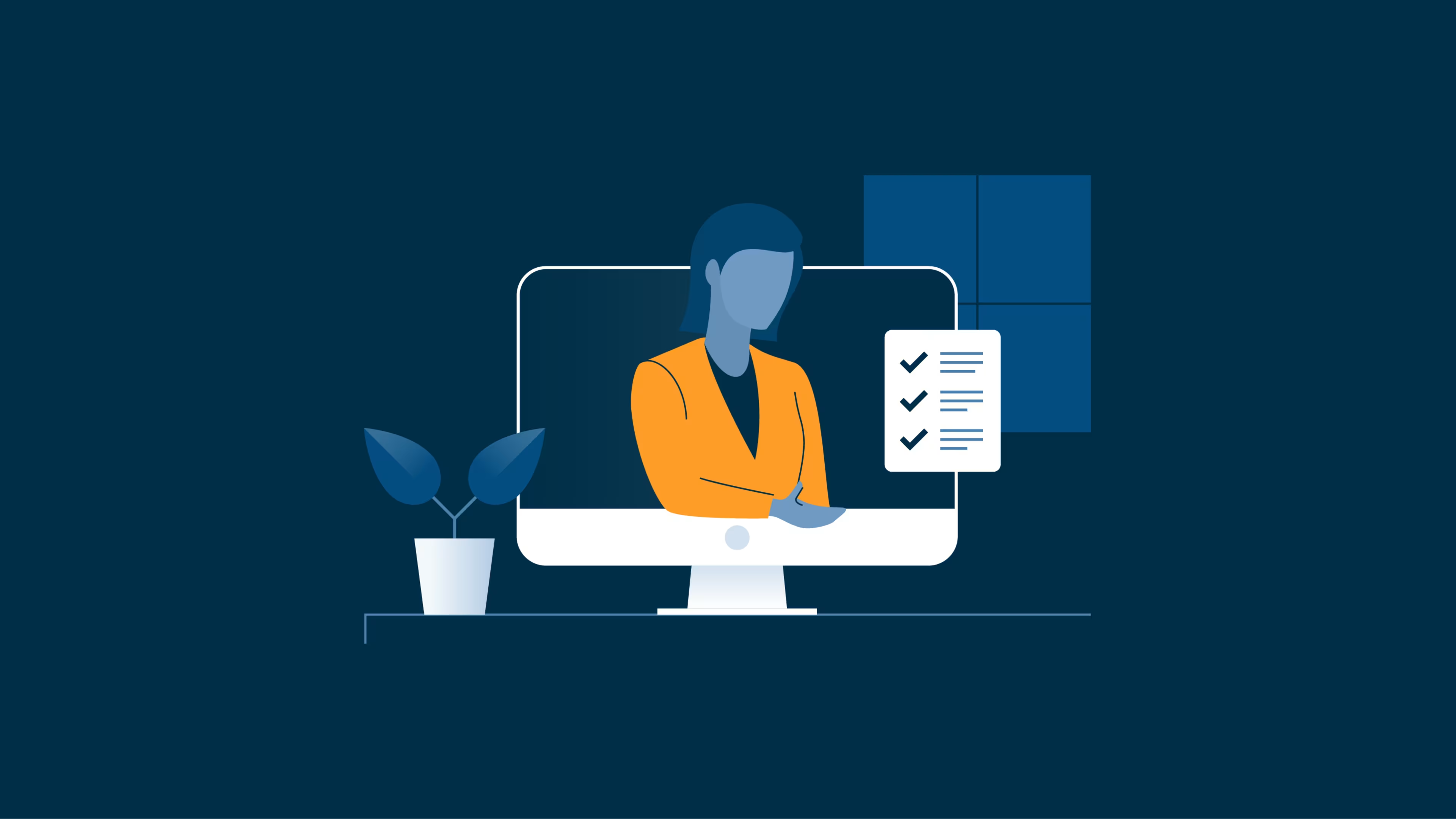Use this analysis of Capterra reviews data to get the most out of your accounting tech stack as your business grows.
When you’re in the market for new accounting software, getting the features right is harder than it seems. Most popular and highly rated software will already include the basic functions you need. So how do you avoid being part of nearly 30% of accounting software buyers that still end up disappointed by product functionality?*
One way is to first consider how crucial a given feature is for your business size. Once you know what your workhorse features will actually be, you can spend more time comparing their performance head-to-head in product demos and trials.
We’ll make this prep work easier by showing what actual accounting software users rated on our site as the most important features for their business size.**
Whether you’re buying a system to meet your current business stage’s most pressing needs, or you’re looking ahead for software that will grow with you as you add employees, the sections below will help guide your search:
Most critical accounting software features for small businesses (<200 employees)
Most critical accounting software features for midsize businesses (201-999 employees)
Most critical accounting software features for large businesses (1,000+ employees)

Most critical accounting software features for small businesses
Startups and small businesses with under 200 employees value features that help you manage your operations and keep accurate records. Many of these features come standard in accounting systems, but that doesn’t mean all products will perform them exceptionally well.
Financial reporting and general ledger should come as core features in all accounting systems. Expense tracking doesn’t always come standard, but most small businesses place it in their top three features in terms of utility and importance for accounting functions.
#1. Financial reporting to assess company health
What does financial reporting do?
Financial reporting helps you generate all primary financial statements, including the balance sheet (to check the overall business worth), the income statement (to check profitability), and the cash flow statement (to check if the business has money to cover upcoming expenses). Receivable and payable aging are two other popular reports small businesses produce to track delayed payments from customers and unpaid bills owed from company to suppliers.
Some advanced systems also offer customizable dashboards to help visualize trends and key performance metrics, which can alert you of any unexpected changes.
Read more about the financial reporting feature in our buyers guide.

A CFO dashboard showing key financial metrics from business activity (Source)
Why do small businesses consider financial reporting critical?
About nine out of 10 small businesses consider financial reporting a highly important or critical feature, and it remains so throughout the life of a business—both midsize and large business users give it top priority.

From attracting investors and preparing tax returns to planning for the exit strategy, you’ll need this feature from the very start for a variety of reasons.
The everyday value of this feature lies in its ability to generate customized business reports on demand. Many small-business buyers seek it to track performance breakdowns by revenue sources; for example, a transportation company monitoring profits from each of its trucks for investors. Otherwise, creating these reports manually, with spreadsheets or by hand, can be quite tedious and restricting as it’s typically taken up only at the end of accounting periods or tax-reporting deadlines.
This is such a key component that 42% of business leaders view timely and accurate financial reporting as a sign of a strong accounting department, according to Capterra 2023 Accounting Shortage Survey.
Do you need a dedicated financial reporting tool or an accounting suite?
According to Capterra buyers data, a majority of buyers (98%) prefer integrated financial reporting capabilities in accounting systems.* While small businesses are well-served by getting financial reporting functionality as a part of a larger accounting suite, standalone financial reporting tools do exist for more advanced users.
Interestingly, buyers' data shows that buyers replacing their accounting software often say they need to have financial reporting functionality. Moreover, we also know from Capterra reviews data** that users of accounting software across all business sizes rate financial reporting as a commonly used and most important feature. This leads us to believe that some buyers currently dissatisfied with their accounting software may be interested in upgrading financial reporting specific functionality.
Comparing financial reporting features between products? Keep these things in mind:
Make sure the software meets the regulatory requirements of your industry and region, including Generally Accepted Accounting Principles (GAAP) or International Financial Reporting Standards (IFRS).
When talking to software vendors, avoid vague statements and be specific about the kind of reporting you need to do most frequently. For instance, if you want to generate monthly profit reports segmented by departments, specifically mention that instead of saying you’re looking to customize financial reports.
Assess the integration capabilities if you want the tool to auto-retrieve data from sources such as payroll or CRM software.
Explore Capterra’s Shortlist to check out top-rated financial reporting tools based on user ratings and popularity.
#2. General ledger to record and organize transactions
What does general ledger do?
General ledger serves as the center for all financial record-keeping. It lets you create a tailored chart of accounts (CoA)—a list of all important accounts—for your business. You can also easily make journal entries by adding transaction dates, amounts, and brief comments. The feature would categorize them into debit and credit to relevant accounts. It also facilitates easy preparation of the trial balance, a critical exercise to ensure the integrity of all financial information. More advanced systems also automate repetitive journal entries such as monthly depreciation or interest charges.
Read more about the general ledger feature in our buyers guide.

A view of the general ledger in an accounting tool (Source)
Why do small businesses consider general ledger critical?
General ledger (GL) is an indispensable accounting function, a close second in importance for 85% of small businesses after the financial reporting feature. Even as a business grows, general ledger stays crucial; though it becomes a routine activity while other accounting tasks take the spotlight.

Small businesses often switch to software-based general ledgers when manual recording becomes difficult and disorganized with growing transaction volume. Most buyers look for a GL feature that’s intuitive, easy-to-use, and saves them time spent on bookkeeping. If you’re still using spreadsheets to maintain your ledgers, shifting to a basic or relatively affordable accounting solution will show you how convenient it can be to maintain financial records.
Do you need a dedicated general ledger tool or an accounting suite?
General ledger is at the heart of all accounting processes, so it’s unsurprising that buyers expect this as a core function of any accounting solution. Though some stand-alone general ledger tools are available, they are usually sought by independent bookkeepers for practice purposes.
Comparing general ledger features between products? Keep these things in mind:
Check if the software makes it easy to set up your beginning ledgers and allows customization of your chart of accounts.
Look for automatic functionality, such as transaction matching, account balance adjustment, and intuitive debit and credit categorization of journal entries to relevant accounts.
Make sure the feature’s interface is user friendly and easy for inexperienced users to navigate.
Explore Capterra’s accounting software Shortlist to see top-performing systems that have general ledger capabilities.
#3. Expense tracking to monitor everyday spending
What does expense tracking do?
Expense tracking simplifies the process of managing business expenses. With this, employees can submit claims for reimbursement by uploading images of receipts, which can then be reviewed and approved through customizable approval workflows. Many systems also allow managers to categorize expenses, and set spending limits and automatic approvals for on-the-go employees. They also enable users to generate expense reports and visualize real-time trends from a dashboard. Some advanced expense management tools even sync employee credit cards, so transactions can be uploaded automatically, and enable easy reimbursement of funds.
Read more about the expense tracking feature in our buyers guide.
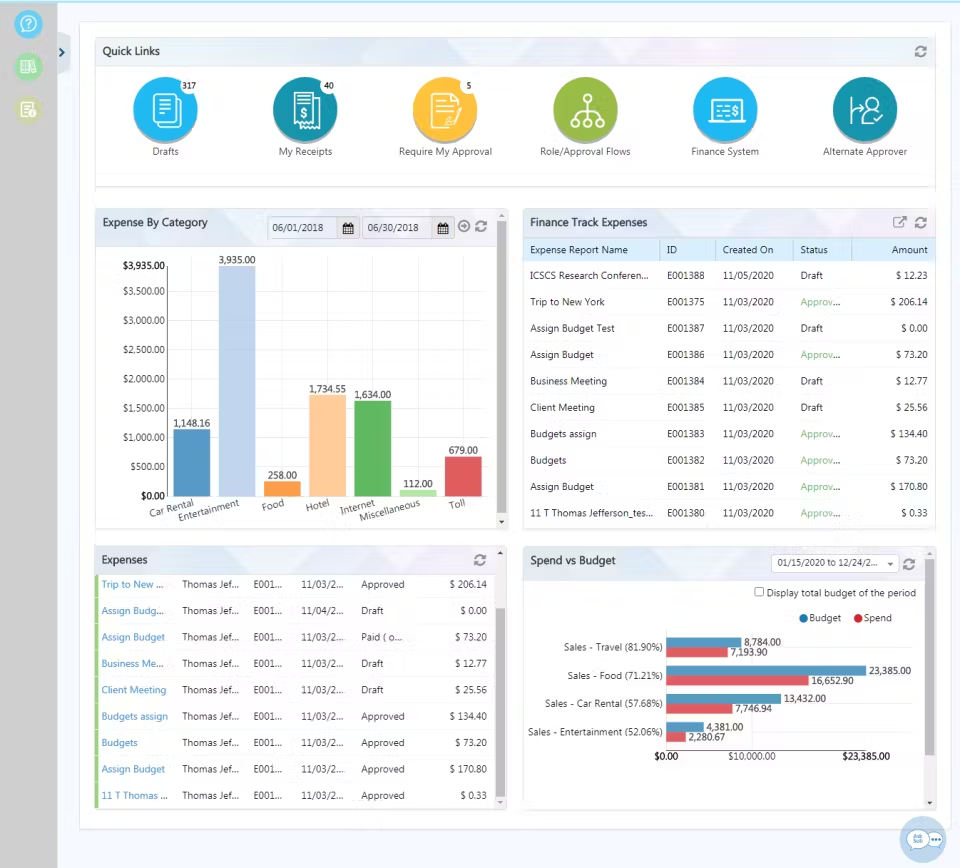
An expense tracking dashboard (Source)
Why do small businesses consider expense tracking critical?
Expense tracking is the third most essential feature for small-business users looking for accounting solutions: 82% cite it as highly important or critical.
Startups and early-stage small businesses with fewer employees often use this feature to keep a log of all company expenses and store receipts in one place.
Businesses with a larger workforce often seek it to monitor and approve staff expenses on travel, entertainment, and other purchases, such as transactions made on company credit cards. Tracking these expenses not only helps businesses run efficient operations but also claim those valuable tax deductions on business spending.
Do you need a dedicated expense tracking tool or an accounting suite?
Capterra buyers data shows that a majority of buyers (63%) looking for expense management capability seek out specialized expense reporting software as opposed to integrated accounting suite.*
Part of the reason could be that many accounting systems do not offer expense tracking as part of their broader set of features. Even those that do usually only serve very small businesses with a handful of employees who don’t need all the bells and whistles of dedicated expense management tools. All they need are basic functionalities such as the ability to upload receipts and record expenses.
Comparing expense tracking features between products? Keep these things in mind:
Consider the number of users that will use the system and their respective roles in authorizing and approving claims. Ensure the system can support multiple users.
Look for software with mobile apps to enable employees to scan and submit receipts even while they’re on the move.
Check if the tool easily integrates with your accounting system, so accounting can be automatically alerted when a receipt is submitted, approved, and is ready for processing. Plus, they’ll be able to authenticate every transaction.
Explore Capterra’s expense report software Shortlist to check out top-rated products based on user ratings and popularity.
Most critical accounting software features for midsize businesses
This section is for midsize businesses between 201 and 999 employees that are experiencing rapid growth in their stakeholder relationships, leading to a rise in the volume and complexity of financial transactions.
Though all features mentioned above remain critical for midsize businesses, this section will focus on three new and distinctive features that become absolutely important for them at this stage of their growth.**
Generally, accounting systems come standard with all the features listed here: accounts payable, accounts receivable, and bank reconciliation. However, not every product may be able to handle the increased accounting needs equally well. It’s important to analyze your unique business needs to determine the level of automation and functionality you’ll need in these features. Let’s dive in.
#4. Accounts payable to maintain strong supplier relations
What does accounts payable do?
Accounts payable allows you to manage outstanding bills and obligations to vendors, suppliers, and creditors. It lets you capture the invoices received from different vendors. Using optical character recognition (OCR) technology, it extracts relevant details, including due dates and payment terms. It enables you to securely transfer funds to vendors and suppliers, track unpaid invoices, and generate reports on outstanding liabilities. Most systems will also send alerts for upcoming dues.
More extensive features, such as creating purchase orders, monitoring their status, automating recurring payments, and preparing 1099 tax forms for vendors, are also sought by businesses dealing with a higher number of transactions.
Read more about the accounts payable feature in our buyers guide.
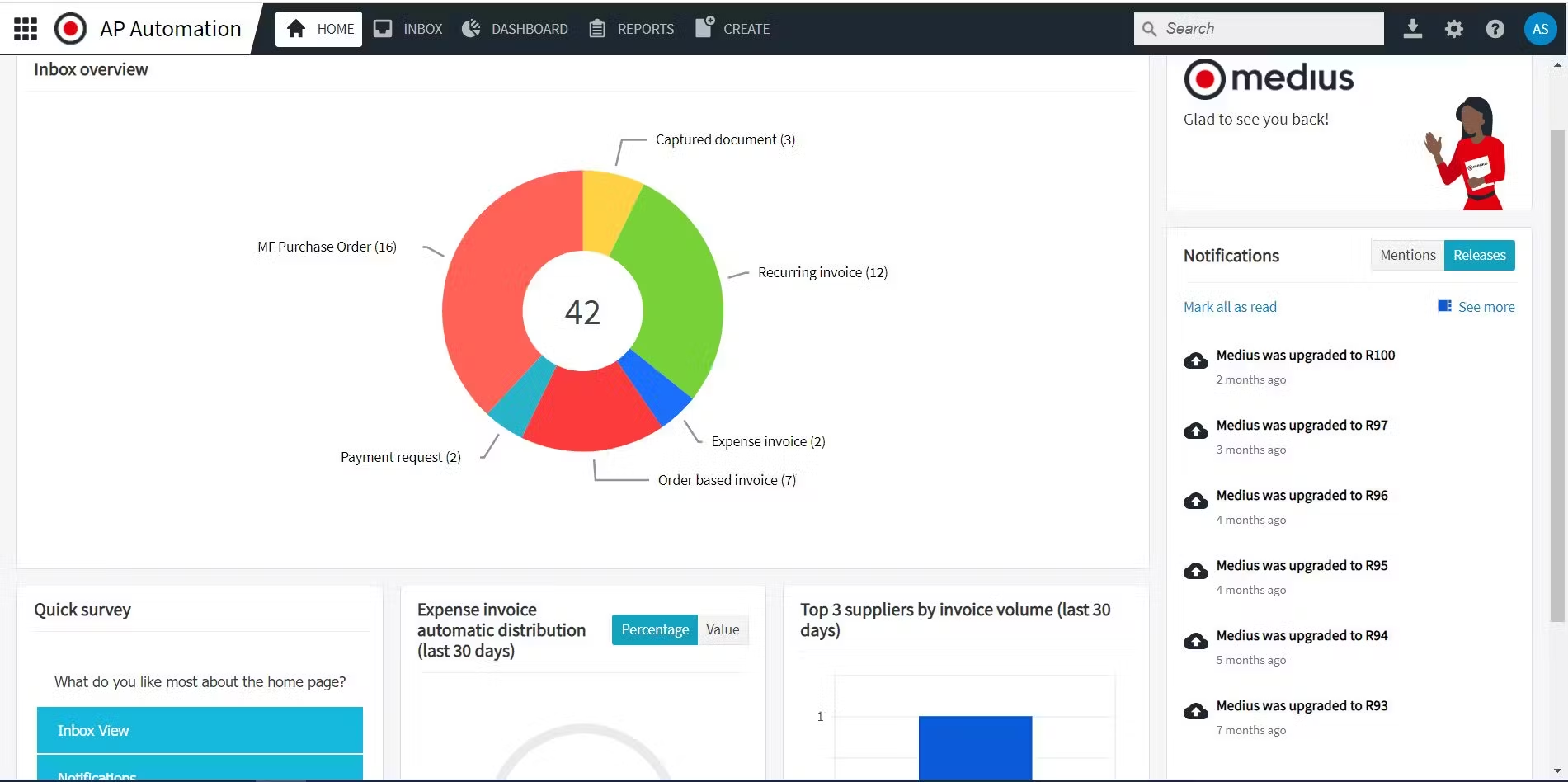
Accounts payable dashboard to track payments owed by a business (Source)
Why do midsize businesses consider accounts payable critical?
Managing payments to a handful of clients or suppliers is simple, but as you grow, the volume and value of payments you process increases. This necessitates a move away from communicating on email chains about the status of invoices to a system that helps you keep due payments in check and maintain healthy business relationships.

If you spend a significant amount of time managing outgoing payments, you have a solid business case to adopt accounts payable functionality. It will reduce manual efforts and minimize expensive errors, providing you with a reliable foundation to build strong stakeholder relationships and maintain cash flow.
Do you need a dedicated accounts payable tool or an accounting suite?
Most buyers (95%) prefer dedicated accounts payable tools over integrated accounting systems for accounts payable feature.* Best-of-breed applications offer advanced features beneficial for growing businesses who may find in-suite accounting applications that cover accounts payable as a basic function insufficient to cater to their expanding business needs.
Comparing accounts payable features between products? Keep these things in mind:
Consider whether you require certain functionalities specific to your industry niche, such as handling multiple suppliers and contractors in construction business, or accommodating unique tax requirements of a nonprofit organization. Check with vendors if they’ve worked with other clients in your industry.
While templatized workflows can save time, a lack of customization may render the system too rigid and ineffective. Discuss your process requirements with vendors to check if the accounts payable workflow in their software can be customized to fit your needs.
Consider the range of payment methods you need the system to support and whether it offers multi-currency support if you conduct international business.
Explore Capterra Shortlist to check out top-rated specialized accounts payable tools based on user ratings and popularity.
#5. Accounts receivable for more control over incoming payments
What does accounts receivable do?
Accounts receivable lets you easily create and send invoices to clients, monitor payments, and receive alerts when a payment is outstanding. You can also generate reports on monthly credit collection, identify your highest-paying clients, and keep an eye on outstanding or aging receivables.
Some software even offer the ability to set up customizable payment plans, such as "buy now, pay later,” and provide a customer portal to let clients review previous orders, make payments, or even submit return requests.
Read more about accounts receivable features in our buyers guide.
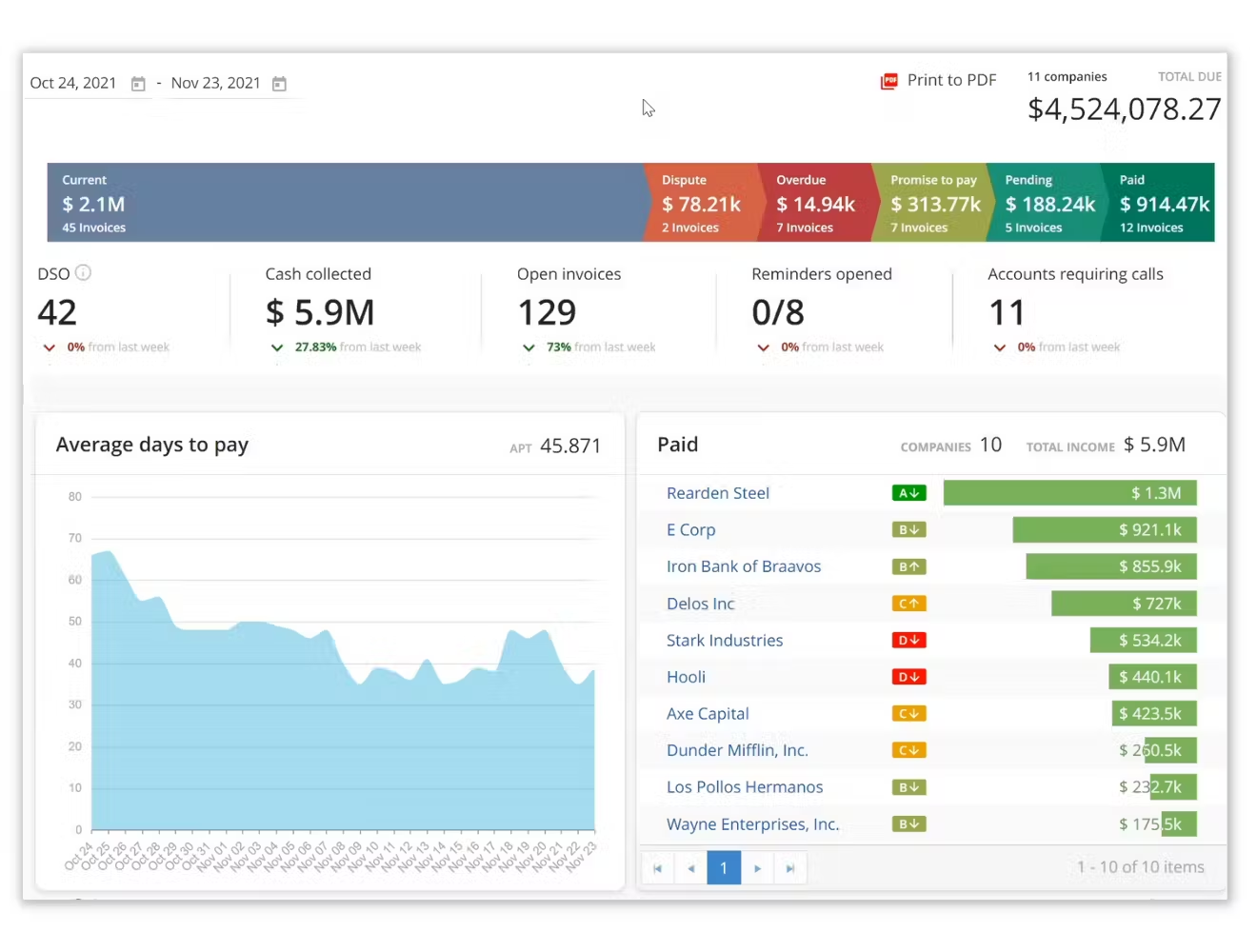
A dashboard to track the status of invoices sent to clients (Source)
Why do midsize businesses consider accounts receivable critical?
Invoicing and payment collection are the most essential exercises for a healthy cash flow. But doing it manually can be frustrating for you and even lead to strained relationships with customers. No wonder, 87% of midsize businesses consider accounts receivable (AR) to be a highly important or critical feature of accounting.

Most businesses seek it for three major tasks: sending out invoices to clients, tracking unpaid invoices owed to the company, and running reports on customer accounts. Some midsize business buyers even seek this function to find their most valuable clients that make up the bulk of incoming funds, who can then be nurtured and engaged for repeat business.
If you’re not getting paid on time or are spending too much effort in the dunning and collection of payments, AR can free up your time and set up a proper workflow that ensures timely payments.
Do you need a dedicated accounts receivable tool or an accounting suite?
Capterra buyers data shows that 97% of businesses seeking this feature prefer best-of-breed accounts receivable solutions instead of depending on basic accounts receivable functionality that comes by default in accounting systems.* Dedicated AR tools go beyond invoice creation to provide a more extended set of features to manage revenue.
Comparing accounts receivable features between products? Keep these things in mind.
Look for custom invoice templates that let you create professional-looking invoices with your company logo, branding, and payment terms.
Check out the payment options it offers and the integration with merchants and payment gateways such as PayPal.
Ensure it can integrate with your accounting system currently in place to make it easy to update your general ledger.
Explore Capterra Shortlist to check out top-rated specialized accounts receivable tools based on user ratings and popularity.
#6. Bank reconciliation to guarantee the accuracy of records
What does bank reconciliation do?
Bank reconciliation automates the process of comparing and matching accounting records with bank statements. It allows you to securely import bank statements and match the transactions listed on your bank statements to accounting records. For each transaction that matches, it marks them as cleared or reconciled.
Transaction matching is largely automated in most accounting systems. It can also identify discrepancies such as duplicate entries, missing transactions, or inaccurate amounts. Some advanced features even resolve discrepancies by adding entries and flagging unmatched transactions for human intervention.
Read more about the bank reconciliation feature in our buyers guide.
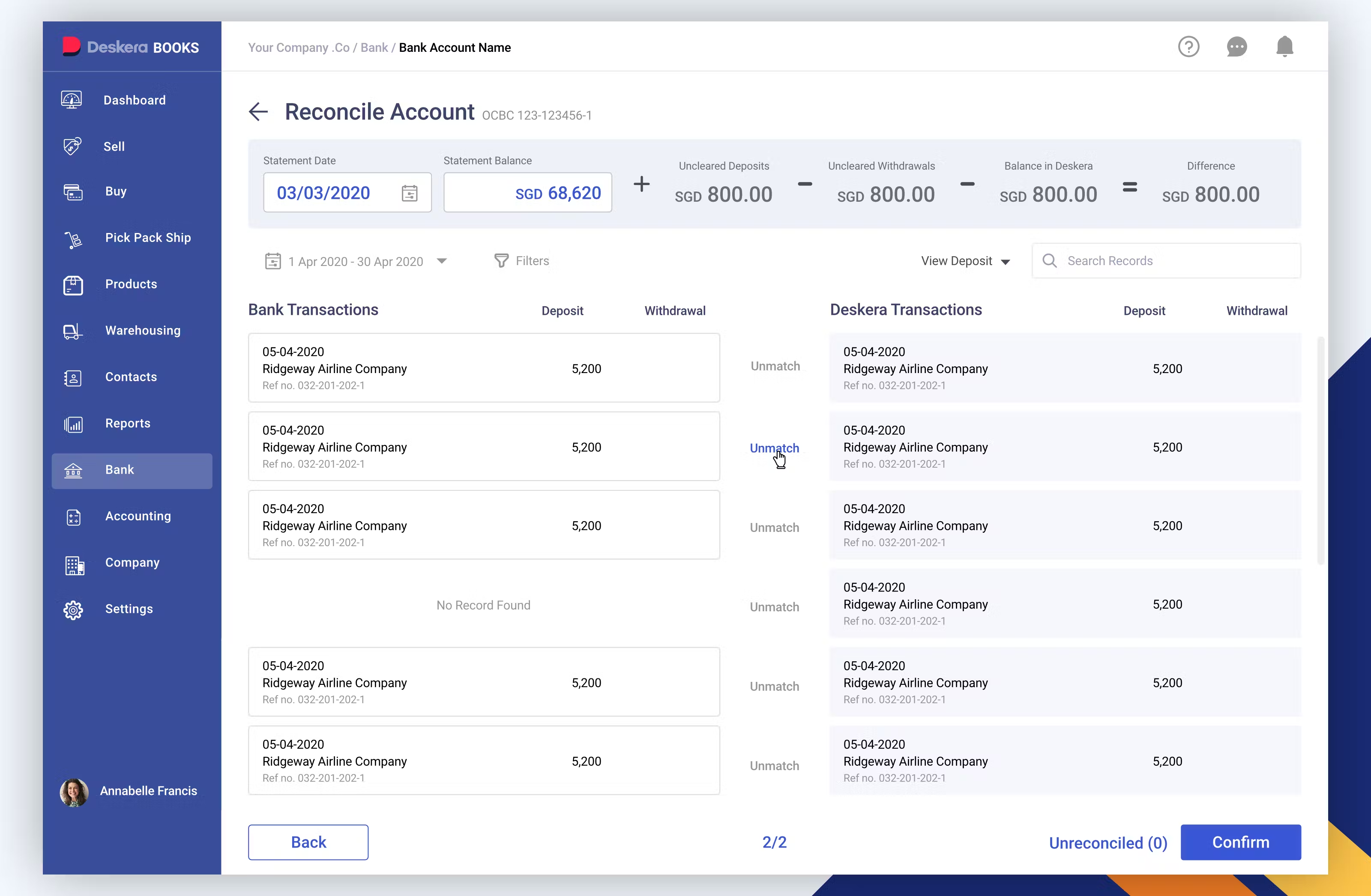
Reconciliation of transaction records in accounting software with bank statements (Source)
Why do midsize businesses consider bank reconciliation critical?
Bank reconciliation is a basic accounting function that acts as an internal control mechanism, ensuring the integrity of financial data.

While it's a crucial function for all businesses irrespective of their size, it becomes absolutely necessary when companies expand or take on government projects requiring higher levels of oversight.
For businesses with multiple bank accounts or huge volumes of accounting entries, conducting regular reconciliation becomes essential to detect missing transactions and even fraud.
Do you need a dedicated bank reconciliation tool or an accounting suite?
According to Capterra data, most accounting software buyers (83%)While small businesses are often well-served by reconciliation capability offered in accounting software, growing midsize businesses that want to upgrade their accounting solution for better reconciliation function may turn to a third-party specialized tool for a more affordable alternative, but make sure the integration works well with your existing accounting system.
Comparing bank reconciliation features between products? Keep these things in mind.
Check the level of automation and customization offered, such as automatic matching of transactions, user-defined rules for matching criteria, and reconciliation alerts for discrepancies.
Make sure the software is compatible with your bank accounts and business tools, such as CRM software, and can easily fetch transactions from them.
Evaluate the software’s accuracy in reconciling transactions and detecting errors such as duplicate transactions or missing entries during the free demo or trial period.
Check Capterra Shortlist to explore bank reconciliation functionality in top-rated accounting tools based on user ratings and popularity.
Most critical accounting software features for large businesses
This section is for large businesses with 1,000 or more employees that are firmly established and need a greater depth and breadth of tech features than smaller competitors. In fact, at this stage many seek specialized, best-of-breed tools for specific accounting tasks.*
While all of the features mentioned above for small and midsize businesses are also still critical for large businesses, a distinctive feature takes center stage for them: billing and invoicing. It stands out as a vital function for large businesses even if it’s not always a standard feature in accounting systems.
#7. Billing and invoicing feature to optimize customer payments
What does billing and invoicing do?
Billing and invoicing creates a centralized database of all client information and their billable time and expenses. It then uses the data to generate invoices for payment. It lets you track time on a project, create bills with customizable templates, send one-time or recurring bills on clients’ preferred communication channels, track payment status, and send automated reminders for dues. You can also generate reports to see your payment collection trends, outstanding balances, and high-paying clients. Some advanced systems may even notify you when an invoice is viewed by the recipient and offer integrated payment systems.
Read more about the billing and invoicing feature in our buyers guide.
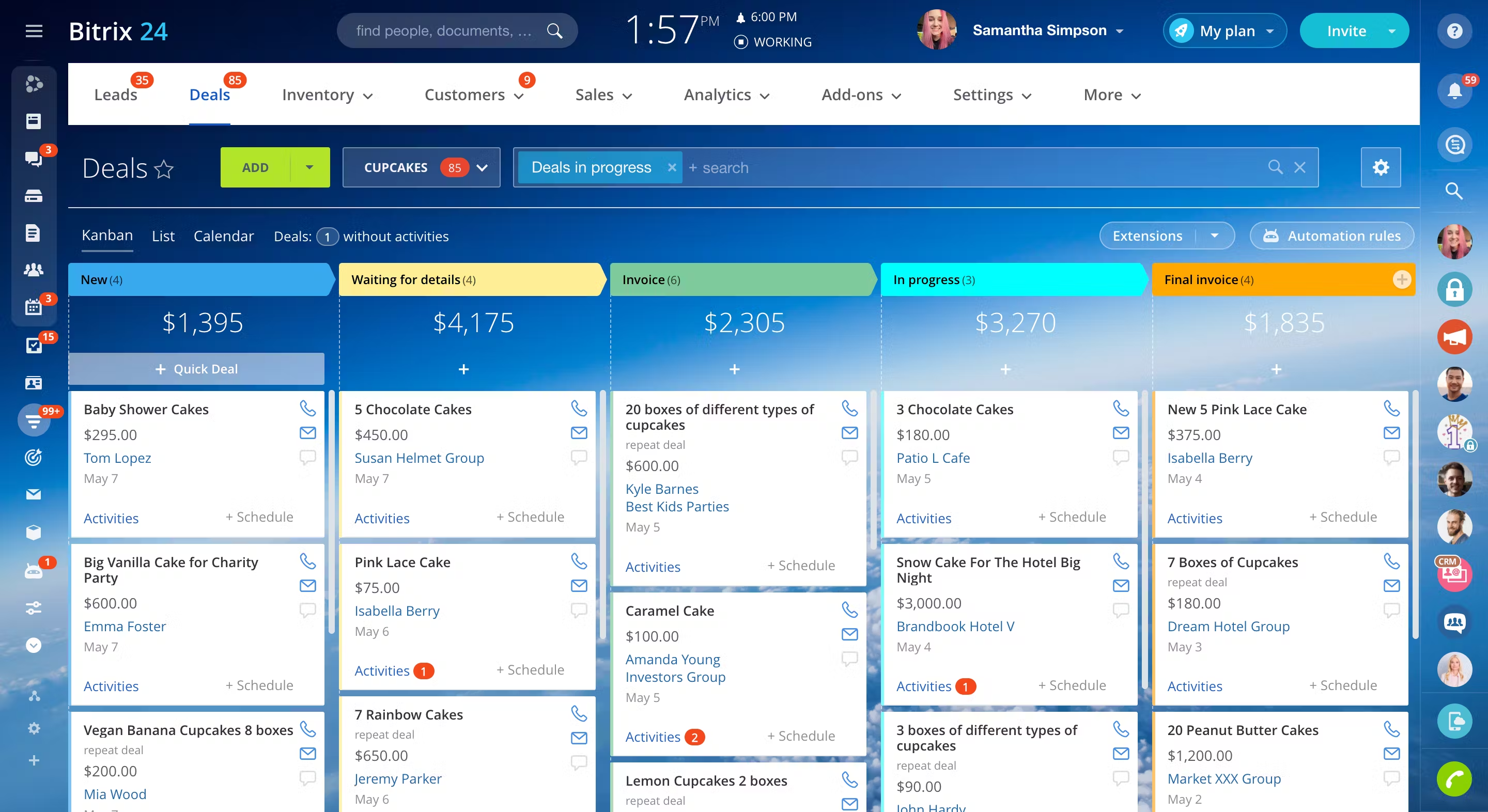
A dashboard to schedule, track, and collaborate with teams on invoices (Source)
Why do large businesses consider billing and invoicing critical?
As a business grows and handles more transactions, tracking billable time and expenses for multiple clients, customers, and projects becomes more complex. It’s no surprise then that billing and invoicing is the second-most desired feature after financial reporting.

Billing and invoicing takes care of the accounts receivable (AR) side of things by logging pending invoices and collected payments into the AR component of the general ledger. However, it focuses more on billing processes than any other aspect of the business. By integrating with customer relationship management (CRM) and project management modules, it improves invoicing, payment collection, and relationship management.
A common ask from enterprise buyers is a simple yet professional-looking system that makes it easy for users to create invoices and appear trustworthy to customers if they want to process payments.*
Do you need a dedicated billing and invoicing tool or an accounting suite?
Our data shows that most buyers (75%) prefer to deploy billing as an integrated feature to the larger accounting suite as it improves user experience by enabling easy flow of data across modules.*
However, a quarter of buyers do seek more robust billing functionalities with high levels of customization. They prefer stand-alone billing and invoicing solutions that can be tailored for their unique needs.
Comparing billing and invoicing features between products? Keep these things in mind.
Check the level of support and automation the feature offers in generating invoices, incorporating contract data, setting up recurring billing cycles, and creating payment terms.
Ensure it provides detailed reports on payment collection trends, invoice aging, and customer payment histories. This data can be a rich repository for your marketing and operations and even help you determine pricing and discounts.
Make sure the tool integrates well with your accounting systems and CRM software.
Explore Capterra Shortlist to check out top-rated billing and invoicing tools based on user ratings and popularity.
Build your software needs at any stage of your company’s growth in three steps
Knowing what features your peers are using is helpful, but you need to consider your unique needs to accurately pick the functionalities that would fit your business. We recommend the following steps to get started with your software search:
Explore our accounting software page: Tailor your search by selecting filters based on your specific needs, such as budget, number of employees, and user ratings. Also, check out our more general list of key accounting features and the top products for each feature that software users, regardless of their business size, rate most critical.
Understand your desired business outcomes: Articulate what you need from your investment, the results you seek, and the pricing points of these systems to avoid buyer’s remorse down the line. Use free trials and demo periods as a learning opportunity to know more about a product before making a commitment.
Get help from an accounting consultant: Learn from the experience and foresight of experts as you move through the software selection process.
One last bit of advice that applies to all the features discussed above is to choose a web-based platform over on-premise systems. It’ll keep your data safe and easily accessible from anywhere, which is essential in times of hybrid work.
Note: Specific software products referenced in this article are examples to show a feature in context and are not intended as endorsements or recommendations.
